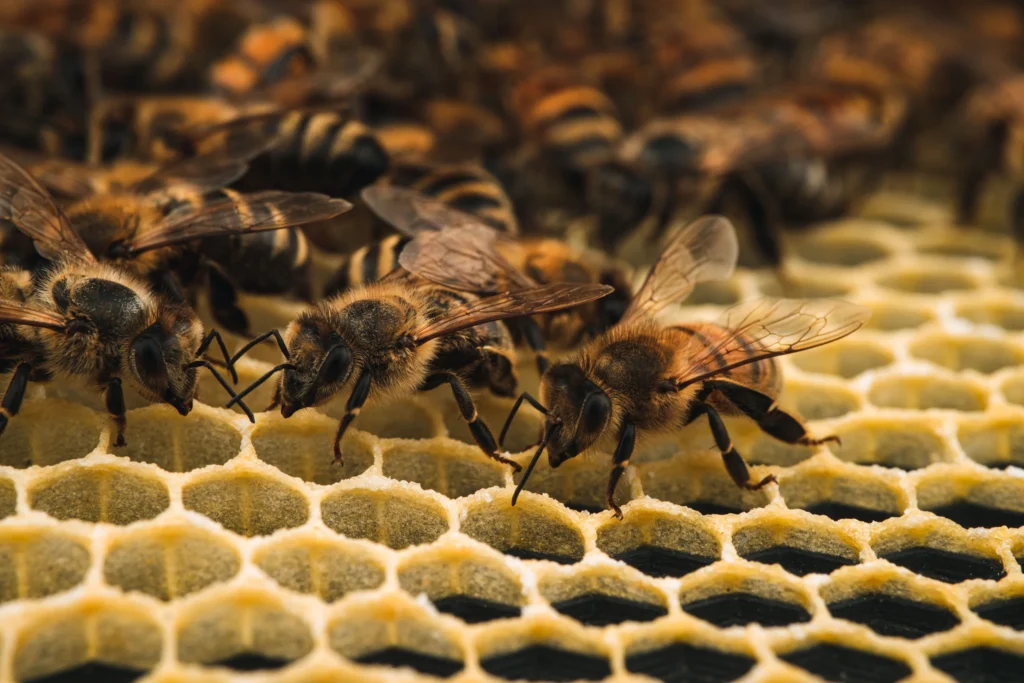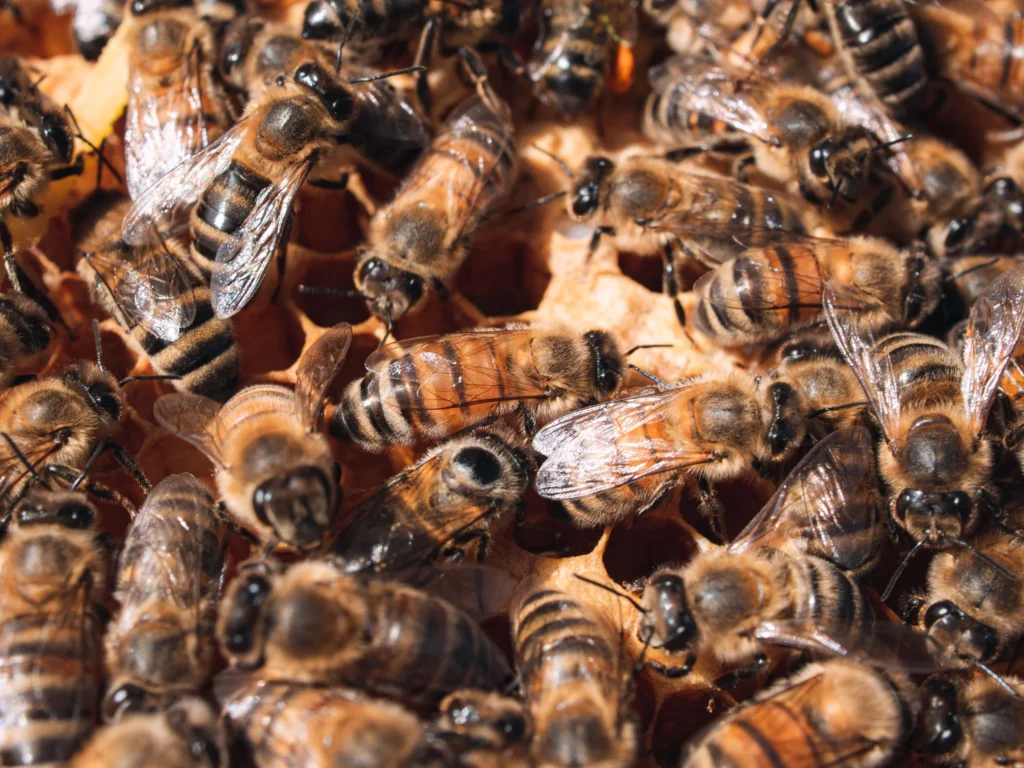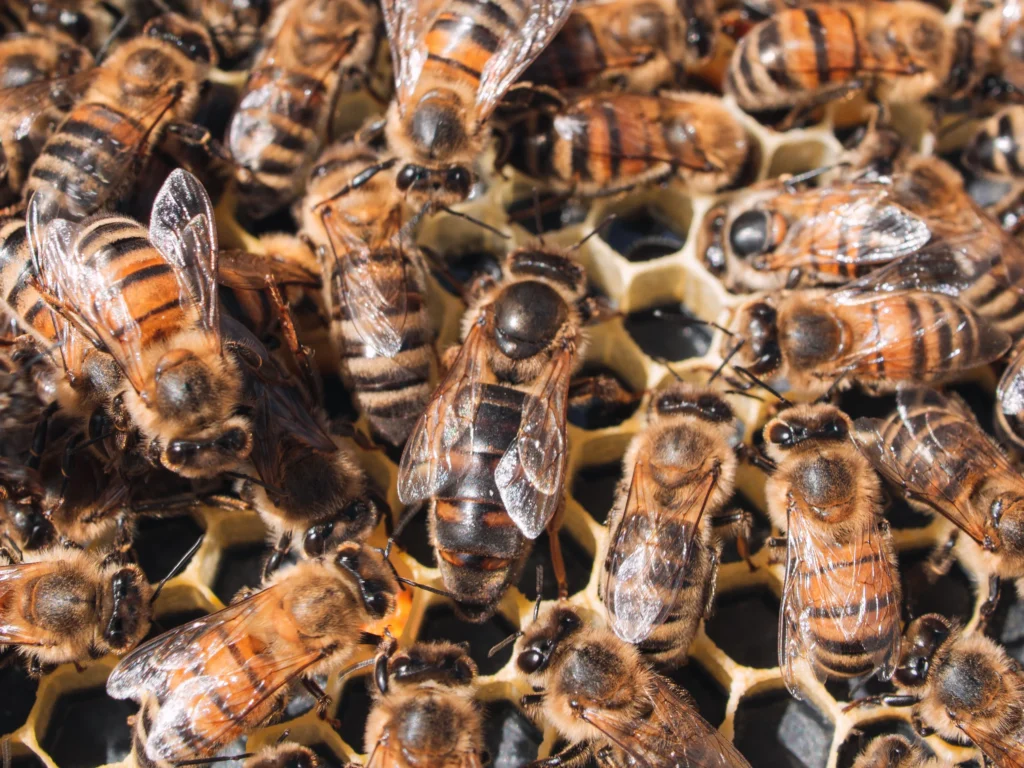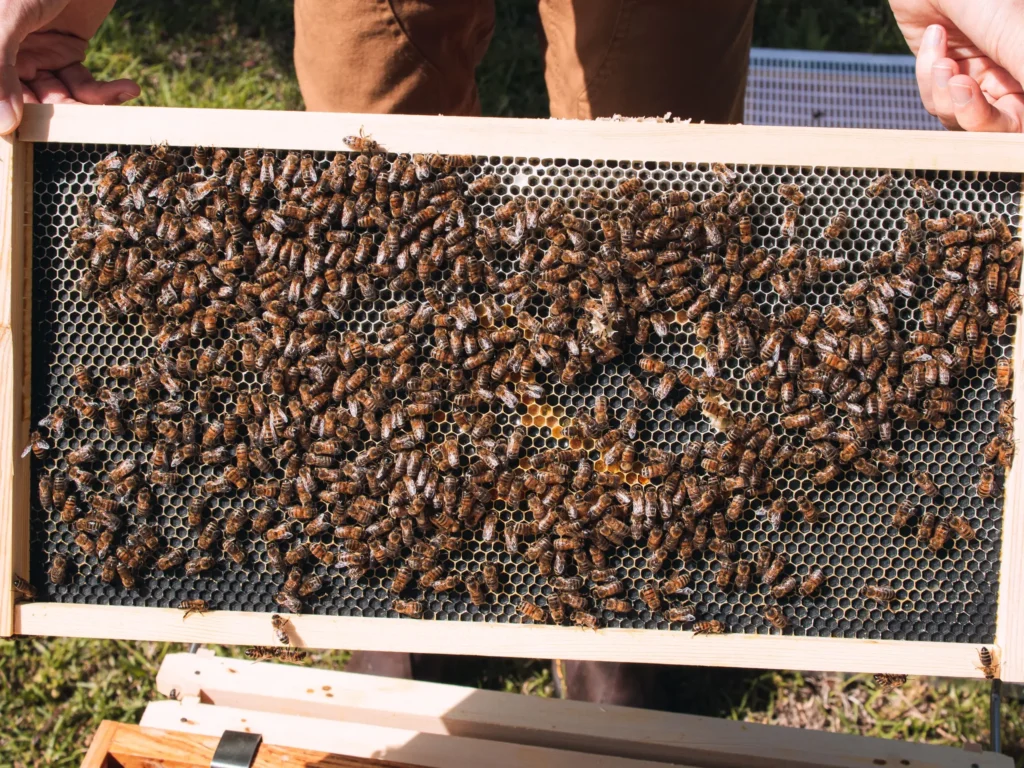The Proud Owners of a Shiny New Superorganism
Beekeeping has been something we have wanted to do for many years but for many reasons we kept putting it off. We definitely would have preferred to have done all of our research before obtaining bees, but we were kind of forced into it – and we couldn’t be happier.
Last year, late spring to early summer, bees invaded our water meter. We decided to just leave them alone since they weren’t hurting anything. Then fall came and activity decreased, then winter and activity ceased. Once the early signs of spring started showing this year, we checked the meter and found that the colony did not survive winter. We removed the old comb (most of it was damaged, discolored, etc.) and cleaned the water meter out.

About 2 weeks later, we noticed bee activity at the water meter again. So, we decided to buy a hive and migrate them. It took about 2 weeks for the hive (and starter kit with all of the tools) to arrive. In that time, they were very busy and we went in with a rough plan to remove the comb and fix it to empty frames using rubber bands. We would also transfer as many bees as possible to the hive and hope for the best.
Migration Day
April 9, 2023
We had a plan, but we are not professionals and apart from the knowledge we gained up to this point we didn’t know what the hell we were doing. We still don’t know what we got right versus wrong, and I’m sure an experienced beekeeper could tell us all about it, but we did it.
We got up early that morning to catch the bees before they became too active. We blow some smoke into the water meter and waited a few seconds, then started prying it open. We were very surprised at how much progress the bees made in such a short amount of time.
It went about as smooth as it could go considering what we were doing. They tried to swarm to a nearby maple tree during the migration but we managed to get several loads of them in a container and into the hive. It wasn’t perfect, but it was necessary. Once complete, we closed up the hive and waited a week to check on them. During this time, we used a feeder that inserts into the front of the hive and refilled daily to make sure they had plenty to eat.
Week 1 Checkup
April 15, 2023
This first checkup was mostly to make sure we hadn’t done too much damage to the colony. Of course we wanted to look for the queen and check for signs of illness, disease, etc. We were fully prepared to capture and mark the queen.
We couldn’t find the queen, but we did see that the bees were busy filling in the frames where the free-hanging combs were. They had even removed some of the rubber bands and dropped them out of the hive entrance.
Everything was looking pretty good, except for the ants. We had been battling the little bastards all week. I added a piece of plywood to the bottom of the stack and smeared petroleum jelly around it to keep the ants from getting to the hive. This usually worked for roughly a day or two at a time.

So, I started working on a hive stand that will be ant-proof. We also ordered a hive top feeder and a medium super (look at us learning terms!) to add to the hive. This will allow the feeder to be inside of the hive and hopefully allow the bees to stop the ants before they have a chance to get in.
Week 2 Checkup
April 22, 2023
Our goals on this checkup were: try to find the queen, check for signs of the queen if we cannot find her, check for pests and signs of illness, and add the medium super with the hive top feeder.
By this time, I’ve made it a few chapters in to a beekeeping book and wanted to do some of this “by the book”. We went in with more confidence in what we were doing and thing went very smooth. We ended up with a gentle colony thus far. We started by brushing off as many ants as possible from the exterior, smoking the hive, then opening it up. The accompanying video starts shortly after we pulled out a couple of the frames for inspection.
On this inspection, we first saw signs that there is a queen – there was larva in the combs. Then, Amber spotted the queen! From there, we were able to capture her and transfer her to a little device used for marking the queen. Basically, a soft foam pad pushes the queen against a plastic grid large enough for part of her thorax to poke through but far too small for her to pass through. Once the thorax is exposed, you color it with a paint pen. The color depends on the year. This year, it’s red.

Marking the queen went well, and she was returned to the hive. We finished our inspection, not before spotting a single small, black beetle. On the next inspection, we will be sure to do something about that. Upon closing the hive up, we added the medium super and the hive top feeder. We will recheck again in a week.
Week 3 Checkup
April 29, 2023
Today, we are three weeks in to having a beehive. I’m still reading the book and learning a lot – I’ll read some chapters more than once and already have another book to go through after this one. Today’s goals: check on the queen, check for signs of illness, pests, etc., add the beetle traps, and top off their feeder.
Since we’ve been sharing the videos with family, we tried to take a little more care in recording what all we were up to. The accompanying video is more comprehensive than the others and none of it is vertical 😁 so it should be more pleasant to watch.
We saw plenty of pollen and nectar in the combs and they’re branching out, drawing new comb on the foundations. I expect we’ll have to add another deep brood box in 2-3 weeks. No signs of illness and the queen was exceptionally easy to spot thanks to her sweet paint job. We saw more beetles, and angry bees chasing them into a corner and jumping them like they’re in the wrong neighborhood – so we’re happy to be doing something about that.
We closed the box up today feeling pretty good about our progress so far. We’ve learned a lot over the last three weeks and still have a lot more to learn. We’ll also be doing research on preventative/treatment for mites to ensure our colony grows to be a strong one. I may continue to post about the bees because of how fascinating they are, but it will not be frequent as I expect most of the time they’ll just be doing bee stuff with nothing to report. We have been very happy to have them and look forward to taking care of them for years to come.

